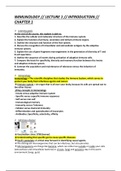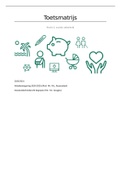Summary
Samenvatting Cellular and Molecular Immunology, ISBN: 9780323479783 Immunology (WBBY020-05)
- Course
- Institution
- Book
This summary includes all the information that you need for the course Immunology. The summary is 187 pages long, because it contains a lot of information, but also a lot of describing pictures which means that you can go fast through it. By reading and understanding this summary you don't even hav...
[Show more]






